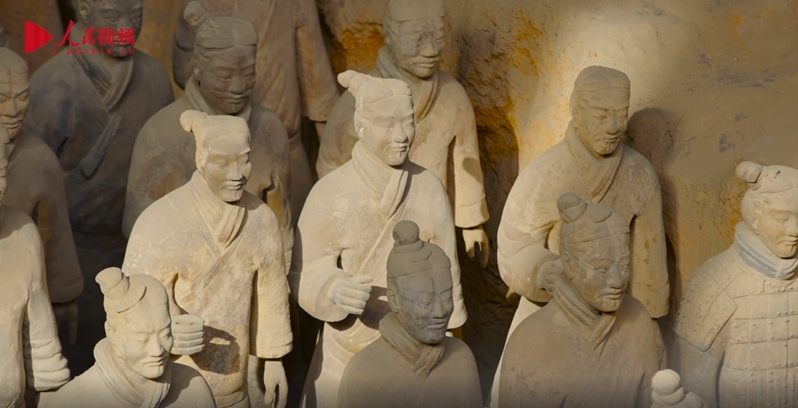In 2020, while facing the raging pandemic, China took the lead in containing the coronavirus and became the only country in the world to achieve positive economic growth. At the same time, the Russian young man Malinin Stepan studied in the Shaanxi Province of China. In April 2021, in the short video “Viewing China From Afar: An Encounter From a Thousand Years: Warriors of Qin and Han Dynasties” produced by People’s Daily Online West USA Inc., Stepan shows us the major symbols of two important dynasties in Chinese history—Terracotta Warriors of the Qin and Han dynasties, and experiences ancient China from more than 2,000 years ago through the micro-expressions of these warriors.
Encountering an army from over 2,200 years ago? Meeting a song and dance group from over 2,000 years ago? Stepan was curious about the different stories hidden in Xi’an, one of the most important ancient capitals in China. Under the direction of a local guide, Stepan went to Emperor Qin Shi Huang's Mausoleum Site Museum, where a huge underground army unfolds. Chariots and infantry were all lined up. None of the life-sized soldiers looked the same. The weapons they held ranged from crossbows to spears, and they rode chariots or horses. Their clothes and decorations showed their different ranks and identities. Stepan visited the Pit 1 and it contains the main array of chariots and infantry with about 6,000 life-sized terracotta figures. The museum exhibits a total of three pits with over 8,000 pieces of terracotta warriors.

Differing from the grim underground army of the Qin terracotta warriors was the Han terracotta army in the Yangling Mausoleum of Han Dynasty, the tomb of an emperor of the Han Dynasty. Stepan discovered that the Han warriors were full of joy, singing and dancing and looked happy. According to the guide, this is another mysterious underground kingdom where Liu Qi, the Emperor Jing of Han is buried. He created the first prosperous period in Chinese history, the "Rule of Wen and Jing.” Society was peaceful and life was prosperous at the time. The Han terracotta army represented the appearance of social ecology during the Han Dynasty time period.
As Stepan said at the end of the story, the reason why cultural relics are precious is because they all have their own stories and have witnessed the brilliance of different eras. He hopes to continue to explore and find the hidden surprises and characteristics of ancient China in the Shaanxi Province, an ancient land where China had many major dynasties.
